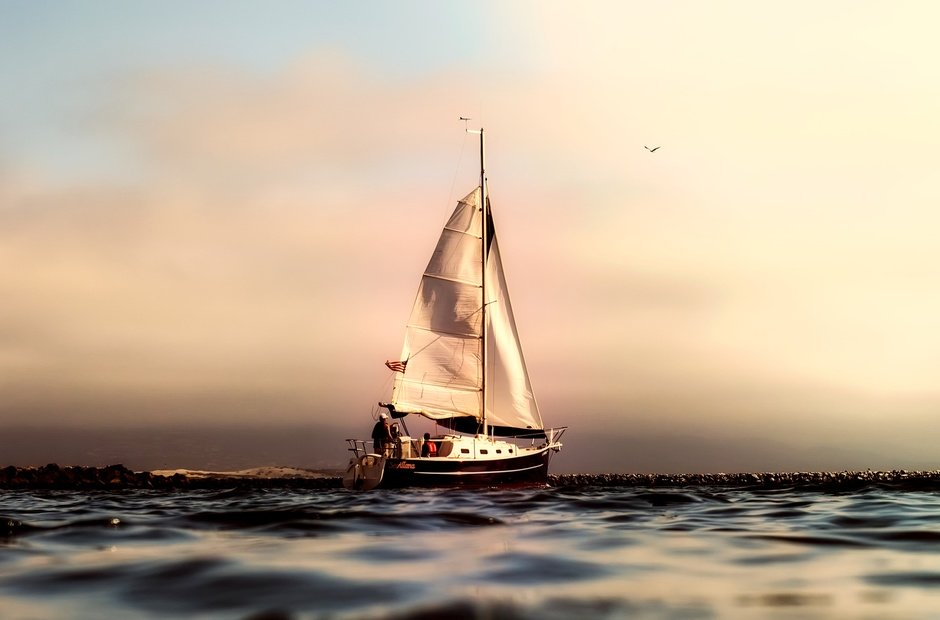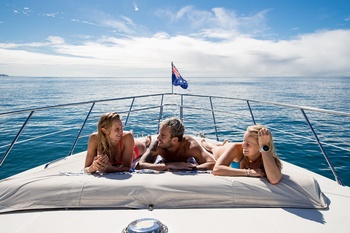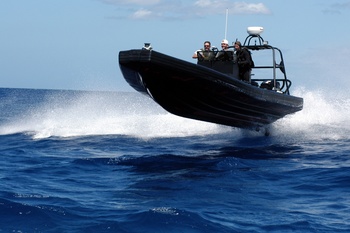In less than a century mankind has resolutely refused a traditional sailcloth in favour of artificial materials - stronger, lightweight, durable and... expensive. What qualities and properties are hidden behind loud marketing names, which the all-knowing market offers us today?
Woven sails
Like centuries ago, they consist of longitudinal(warp) and transverse(weft) yarns tightly woven together at right angles.
Thanks to it modern materials of such kind in general resist pretty well to tensile and bending loads, the more so that instead of usual linen or cotton fibers they are weaved from artificial synthetic threads, which possess the whole complex of new useful properties. For example...
Polyester
Better known by its resounding name «dacron» (Dacron®), the name given to it by DuPont.
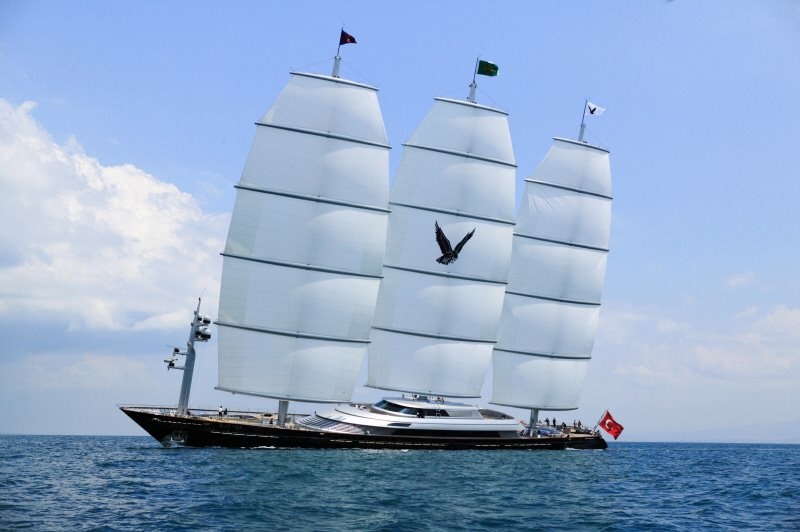
Developed during the World War II, this material was the first to replace natural fabrics and remains the most popular sail material nowadays. It is comparatively strong, has relatively low specific weight, low wear resistance and is relatively inexpensive. However, as proprietary dacron becomes more expensive yachtsmen on a shoestring budget «are outfitting» As more budget-minded boaters are generously outfitting their boats in the same polyester material with a lighter name but cheaper price. By its combined properties, this material is versatile enough that it is widely used for all types of sails on cruising yachts, as well as for some racing boat wardrobe items.
Nylon
As strong as dacron and at the same time even lighter. Compared to polyester, it has greater elasticity, which allows to dampen the sharp load caused by strong gusts of wind (squalls). Usually it is nylon which is used for making sails for full courses (spinnakers and genakers).
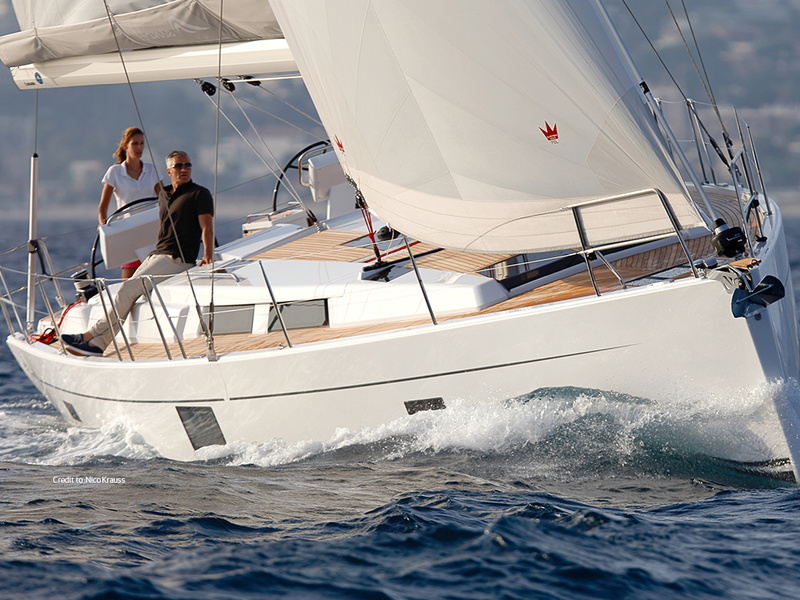
These sails look remarkably colourful thanks to another advantage of this material - it is perfectly (and stably) coloured in any colours. The significant disadvantages of nylon include its increased sensitivity to household chemicals. Especially it concerns chlorinated preparations, the influence of which even in small concentrations can cause irreparable deterioration of the sail.
Modern woven sails are quite reliable and durable. With proper care high-quality sewn polyester set can be successfully used for 10-15, and even all 20 years. In addition, if necessary, they are easy enough to repair, and even to reshape with their own hands. However, an important disadvantage of woven sails is that over time they lose their original shape, and with it their effectiveness. «It is connected with accumulation of total» fatigue as a result of alternating stretching (especially so called oblique loads - diagonally to the interlaced fibers). As a result, the deepest part of the sail (the so-called «belly») gradually shifts backwards. As a consequence, the effective pulling power is reduced: «The splintered» sail non-productive wastes a part of the valuable wind energy for additional drifting and rocking of the boat.
To resist development of such negative phenomena, modern polyester fabrics are impregnated with different compositions (generally, synthetic resins) and also special variants of sail cutting and insertions from composite materials are used. However, all these measures have only a temporary effect, significantly slowing down the process of stretching of the sail, but by no means eliminating it completely. Especially painful consequences of it can be for racing boats, where sails undergo big loads in the pursuit of maximum wind squeezing, and their combinations are changed more often, than on cruising yachts. In such conditions neither special impregnation nor other remedial measures can be effective. That's why developers decided to create new type of sails - laminate sails.
Laminate sails
In contrast to woven sails, they have a combined structure. The outer layer which forms the body and profile of the sail is made of stronger but flexible material (laminate proper) while the inner layer consists of more elastic fibers which can withstand prolonged loads. Sometimes a special layer of light fibre is applied on both sides of this sailing sandwich which additionally protects it against mechanical damage, moisture and ultra-violet radiation.
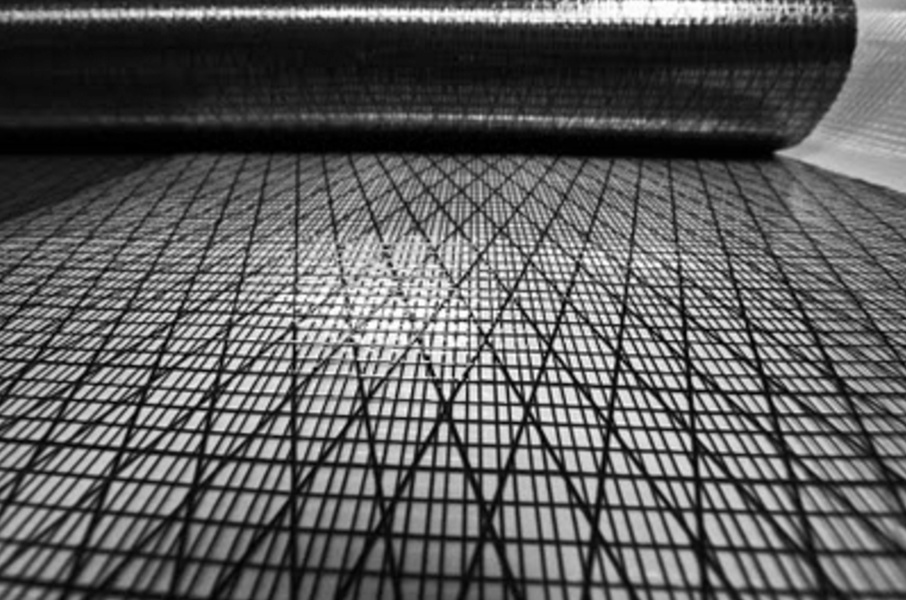
All these features determine main advantages of laminated sails over woven ones: they don't lose their efficiency with time and resist negative influence of external environment - wind, waves and sun better. An analogy with the well-known laminate flooring suggests itself, all the more so because both board and sail retain their unique properties only as long as the laminate layer is intact. In addition to the polyester already familiar to us, other specially developed materials are also used for making laminate sails, which determine the individual properties of each of the fabrics. Let's consider main advantages and disadvantages of their different kinds.
Aramids (or aromatic polyamides)
Synthetic fibers developed in mid 1970's. They have high tensile strength and significant (2.5%-4%) elongation before rupture. In addition, aramids are exceptionally resistant to strong chemicals (including hydrochloric and nitric acid), as well as high temperatures (up to 400°). However, despite all their advantages the fibers have one important disadvantage: they lose their strength rather quickly when exposed to ultraviolet radiation. For minimization of negative effect aramid fabrics are used in yachting as braided or twisted yarns and coated with special protective compositions.
The best known aramid fabrics currently available are:
- Kevlar®- manufactured by DuPont (USA).
- Twaron®and Technora® -Teijin (Japan).

«Sails made of these fabrics are much lighter than traditional polyester fabrics, they are much less» to wear out and therefore retain their performance longer. At the same time they are more exposed to destructive influence of sunlight. Besides, they do not like creases and kinks which can lead to fibers damage and fabric destruction.
Aramid sailing fabrics are available in different combinations of characteristics (elasticity, tensile strength, weight) that determine their application and price. As a rule for racing sail kits they use fabrics with higher initial elasticity modulus such as Kevlar 49 and Twaron 2200. Technora has chemical properties similar to Kevlar fibres of medium modulus, but with a slightly higher modulus. However, it quickly loses this advantage when exposed to UV radiation. That's why sails made of Technora are usually covered with a darker light protective layer.
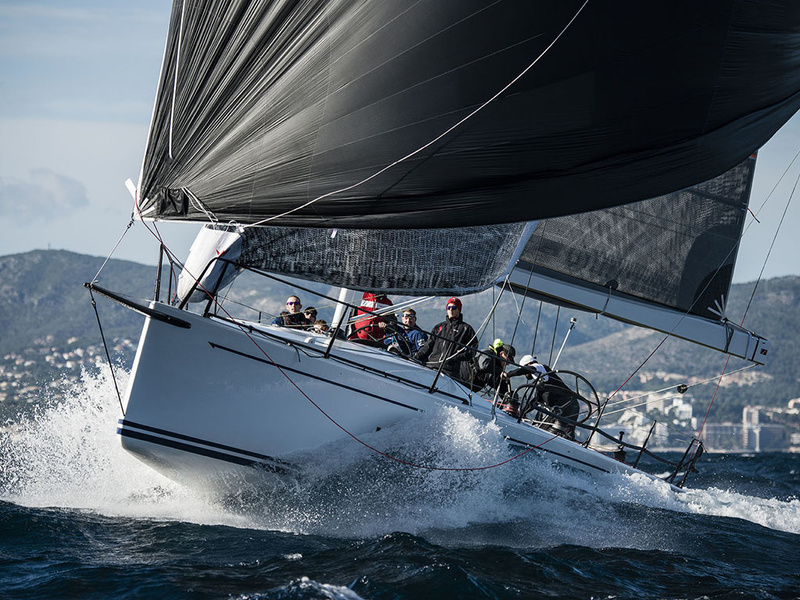
Ultra PE (or ultra-high molecular weight polyethylene)
This material was developed in the mid-1950s but entered the yachting market relatively recently. Ultra PE fibers are notably lighter than aramid fibers, almost do not absorb water and successfully withstand not only most acids and alkalis but also ultraviolet rays. Having comparable modulus of elasticity, Ultra PE is 30-40% stronger than corresponding aramid grades like Kevlar and is even less tensile. «The main suppliers of Ultra PE sailcloths on the market are American company Allied Signal and its European subsidiary» Dyneema.
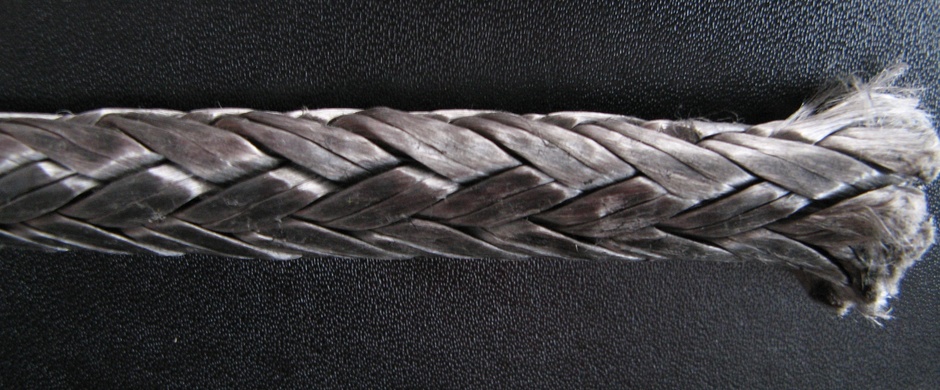
Spectra®/Dyneema®polyethylene fibers have similar characteristics and are often used in combination in the same sail. Ultra PE sails outperform Kevlar in flexural strength and are not afraid of UV, but are more sensitive to high temperatures and more prone to stretching under long loads, making them of little use in racing garb.
PEN (or polyethylene naphtholate)
Further development of the traditional (PET) plastic. The fibers have increased resistance to the strongest oxidants and are somewhat less vulnerable to UV radiation than aramid. Their strength and tensile strength are slightly superior to conventional polyester but significantly inferior to aramid. With such combination of features, the main advantage of PEN sails is price: a boat owner can buy a set of sails with superior properties compared to polyester sails without spending too much money for aramid ones.
The well known PEN fabric Pentex®is produced by Allied Signal (USA) and is mainly used for making sails for racing boats of a fixed type (for example, One Design) where the class rules do not allow the use of sails made of aramid fibres.
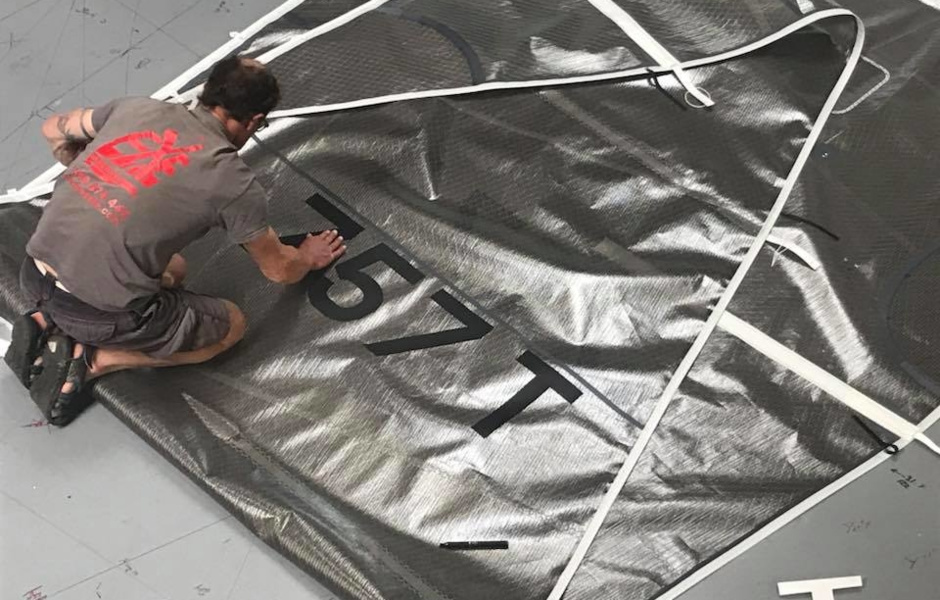
LCP (or Liquid Crystal Polymers)
Developed in the early 1980s, these polymers offer improved durability and are virtually immune to high temperatures and all corrosive reagents, but require reliable additional protection from UV rays.
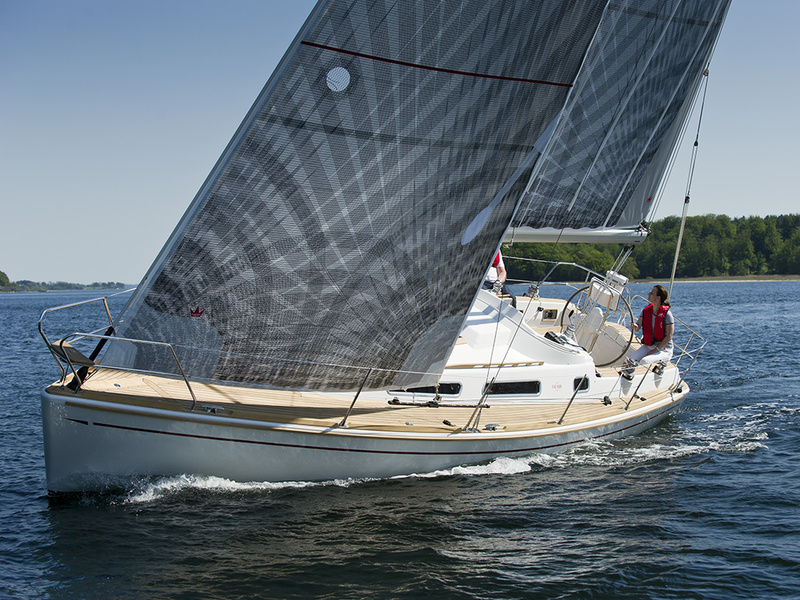
For example, sails from fabric Vectran of German company Hoechst on the strength and ability to resist stretching practically are not inferior to kevlar (average module), possess greater tensile strength and thus much less afraid of fracture.
Mylar
Synthetic film based on polyester fiber/lavsan. It was developed at the beginning of the 1950s by the American company DuPont and was originally intended for replacing the packaging film polyethylene. However, already in the summer of 1955 mylar made its debut as a sailing material.
Mylar sail maintained its profile perfectly, was not subject to stretching and ensured excellent visibility on any course and tack, it was not afraid of neither water nor UV rays. However, this profile had some serious drawbacks: it was deafeningly loud on tack changes and on a sunny day it made sailing a torture, literally «frying» helmsman in extremely hot conditions. In addition, the size of Mylar sails was significantly limited by the technological possibilities of bonding its individual parts, and its strength depended directly on the thickness of the film, which could not be increased indefinitely.
Nowadays Mylar sails can be found only on relatively small boats, but Mylar film is widely used as a base for laminate sails for cruising yachts in combination with Dacron, aramids and PEN-fibers. Mylar yarns are set in the direction of expected loads and make the sail virtually unbreakable. Such sails retain their shape perfectly but are quite expensive and therefore are mostly used by professional sailors. However, in order to avoid premature de-laminations (fraught with damage and complete sail failure) they should be protected from rubbing on spars and rigging.
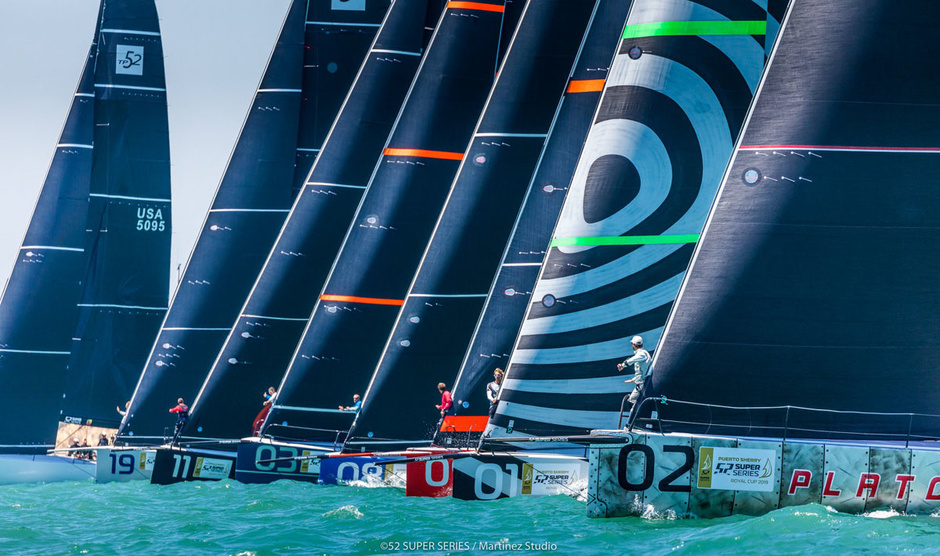
Carbon fiber is composed of filaments formed by crystals of carbon atoms. The material came into existence at the end of the XIX century, but in yachting came only at the end of the XXth century when it was spun into flexible yarns. Sails with carbon-fibre laminate were tested at the 1992 America's Cup. They were significantly lighter in weight, less susceptible to stretching than aramid and totally indifferent to sunlight.
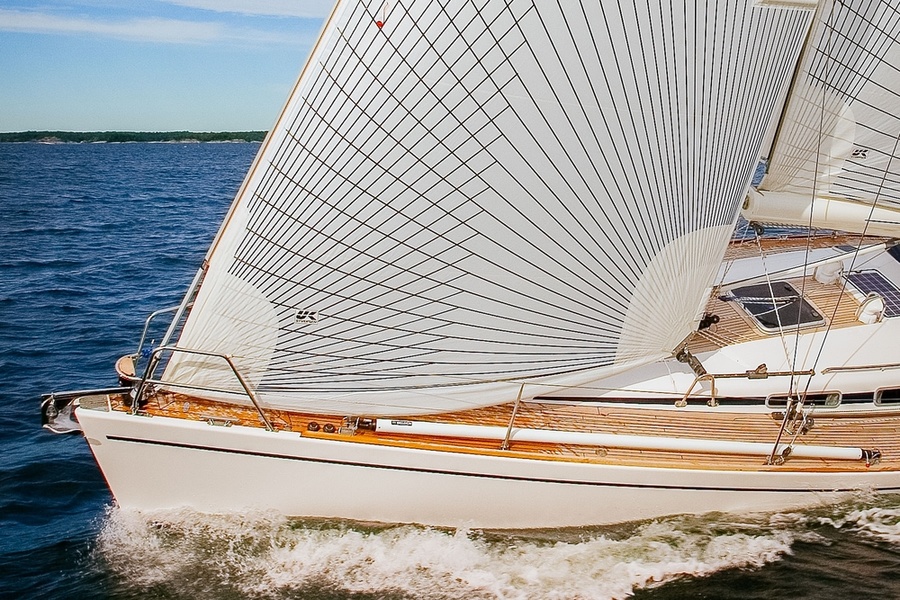
You have to pay for these advantages in the literal sense: carbon sails cost 20-40% more than aramid analogs, and in addition they were much more sensitive to mechanical damages. Nevertheless in the following years experiments with carbon fibre have been continued and nowadays it is considered to be one of the most promising materials for racing sails. For laminates, carbon is used both in its pure form and in combination with aramid fibres.
Parameters of sails: consider and weigh
As we see, in general, the capabilities of a sail are determined by the properties of the fabrics used to make it. Proceeding from practical considerations, it is reasonable to pay special attention to the following their main characteristics:
- Elasticity - depends on the initial elasticity modulus, i.e. the ability of the material to restore its shape after exposure to loads.
- Tensile strength is the load required to break the fibres.
- Loss of strength, usually measured in % of original strength after making 50 successive 180° full bends of the specimen.
- UV resistance is the time in use before 50% of the original strength is lost to sunlight.
- Price.
You can visually assess the capabilities of a material according to the following table:
Table 1. Main characteristics of sailing fabrics
Type of fiber | Modulus of elasticity, g/den* | Tensile strength, g/den* Tensile strength, g/den | Tensile strength loss, % | Resistance to UV radiation, months | Average cost Euro/kg |
Dacron | 80 | 5-8 | 0 | 6 | 5-7 |
Nylon | 20 | 7-9 | 0 | 3 | 7-8 |
Pentex | 250 | 9 | 0 | 4 | 24-40 |
Kevlar 29 | 460 | 24 | 25 | 3 | 48-75 |
Kevlar 49 | 520 | 24 | 30 | 3 | 60-100 |
Technora | 574 | 27 | 20 | 2 | 50-80 |
Spectra 900 | 1400 | 32 | 0 | 12 | 50-80 |
Spectra 1000 | 2200 | 35 | 0 | 12 | 60-90 |
Dyneema | 1200 | 35-43 | 0 | 12 | 50-80 |
Vectran | 600 | 25 | 0 | 13 (with protective film) | >100 |
Carbon | 1500-3000 | 10-24 | 35-100 | Practically insensitive | >120 |
*Den(abbreviated as «denier») is a unit of measure of linear density of a material or ratio of fiber mass to its length. Nen is equivalent to the weight of 9000 m of fibre.
The tare weight of the sails is also extremely important (especially for racing boats). The vast majority of modern synthetic materials are visibly lighter than linen and cotton:
Table 2 Specific weight of fibres used for making sails, kg/m3
Flax | 1600+ |
Cotton | 1500+ |
Polyester | 1300-1400 |
Nylon | 1010-1140 |
Aramids | 1400-1450 |
Ultra PE | 930-960 |
Carbon | 1700-1900 |
Other advantages of certain fibers in pure form can be said only in case of woven sails, as laminate sails usually provide for combined application of different materials. When choosing fabrics, one should consider not only the size of the boat but also what kind of sailing garment is to be made of them.
Table 3 Optimal cloth weight for the sails of a cruising yacht, g/m2
Length by Hull, m | Mainsail and main jib | Small (light) genoa (#3) | Intermediate genoa (#2) | Large genoa (#1) |
Up to 6 | 185–230 | 100–150 | - – | 160–260 |
6,3–7,6 | 230–260 | 100–160 | 230–315 | 200–315 |
7,8–9,2 | 260–300 | 100–185 | 285–340 | 200–340 |
9,3–10,6 | 300–340 | 130–200 | 315–400 | 245–400 |
11–12,2 | 340–400 | 130–200 | 360–430 | 260–430 |
12,5–13,8 | 400–440 | 160–215 | 400–485 | 315–485 |
14–15 | 440–485 | - – | - – | - – |
However, even all the amazing properties of modern materials taken together won't guarantee effective wind control: a sail has to be tailored properly to exhibit their full performance. So...
Sail cut: variations are possible
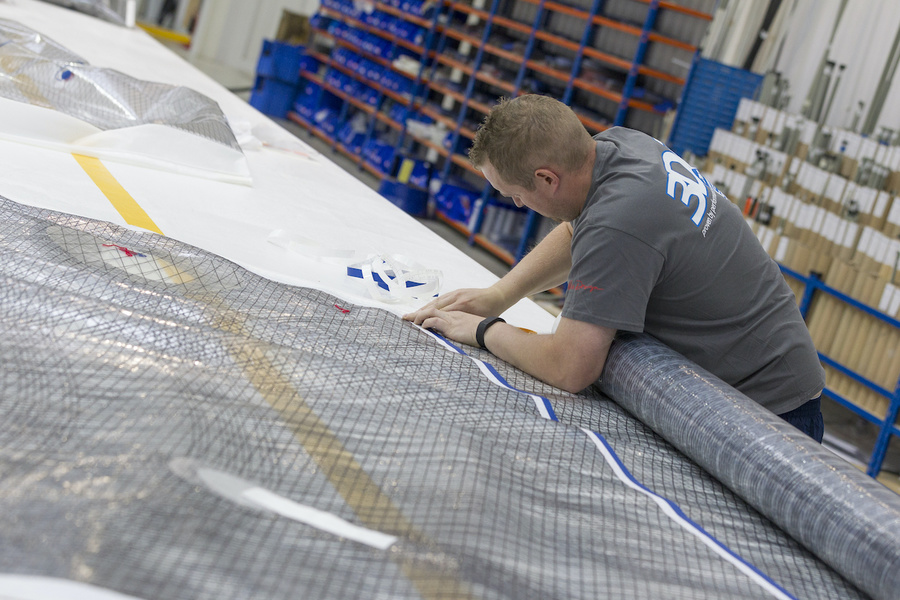
In general case, the body of the sail is formed of separate pieces (panels) of this or that fabric of appropriate form and size, which are placed in different ways in relation with each other. The main cut options in this case are:
- Horizontal: most of the panels have the form of elongated rectangles or truncated trapezes, the bases of which are parallel to each other, and the directions of the seams are close to the horizontal.
- Vertical: characterized by longer webs and a noticeably larger angle of inclination to the horizontal plane. Let us note that due to less structural strength, this variant is much less popular than the horizontal one, and is mainly used for small yachts.
Advantages of the linear cut sails are not too complicated calculations, easy design and assembly, minimum number of seams and waste, and therefore, cost of production. Thus, there is a reasonable compromise between the possibilities of sail efficiency preservation and its price. due to this, sails of horizontal cut are very popular and today they are the basis of the wardrobe of the majority of cruising yachts. However, linear cut is practically inapplicable for modern laminate sails. For them,a radial cut is used. The fabrics are mainly shaped as elongated triangles with their tops grouped in the corners of the sail, and the seams diverge from them as if on radii.
Depending on the number of corners involved, the following varieties of this cut are distinguished:
- Full radial .
The panels converge in one (schola) angle. Such arrangement is mainly used for relatively small boats, aimed at coastal navigation and is well suited for sails with furling in the mast as well as with traditional furling methods.
- Biradial
The tops of the webs are grouped in the upper (halyard) and sheet corners, with the stronger materials used in the front of the sail. This arrangement is commonly used for sails with aspect ratios less than 2.5:1, which are intended for use in a wide range of course angles and windspeeds. Usually, they are a main (working) mainsail and a general jib on boats with a comparatively low spars.
- Triradial
The seams joining the individual panels extend outward at all three corners. This achieves an optimum distribution of tension across the entire sail area, and allows the use of the strongest material in the most stressed areas. Such a cut is rightly considered the best for laminate construction as it allows the most efficient use of different fibre types without increasing the total weight of the sail. Especially recommended for sets of long and narrow racing sails, with a height-to-base ratio significantly greater than 2.5:1.
Important advantages of sails with radial sail plan are: more even distribution of loads, better profile efficiency and ability to keep it longer, and also simultaneous use of different materials. However, there are also significant disadvantages: in comparison with horizontal and vertical sails, they are much more difficult to layout and assemble, have a greater number and length of seams, and are characterized by significantly higher material consumption. All this has a big influence on the price - for example with the same sail area a bi-radial sail is 10-15% or even 30-35% more expensive than a horizontal or vertical one.
Make right conclusions on time
With all the variety of sail fabric options, it's hardly worth chasing the most fashionable samples of them. For cruising boat, even if you are going to do long distance cruising, a good styled (horizontal version) set of quality polyester sails will be enough, and they will last you for many years.
If you want to improve your boat's wardrobe later on, a set of PEN sails will be enough to replace the Dacron sails without spending too much money. After all, who wouldn't tell a serious yachtsman to have at least two sets of sails, one for leisure cruising and another for racing?
Your experience of successful ocean crossings is growing and with it - the craving for higher speeds? So it's time to think about new laminate sails with bi- or tri-radial profile made of aramid or hydrocarbon fibers and even more modern materials. Appropriate novelties appear on the market almost every year.
The main thing is to remember that the achievements of modern technologies mean little without solid skills and skillful hands, thanks to which any wind can be successfully tamed even with the help of the simplest sail.

